Conditions / Procedures
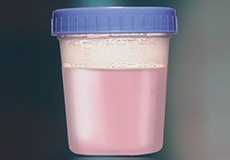
Haematuria
Haematuria is a common condition characterised by blood in the urine. Haematuria is usually categorised into macroscopic, where the urine is discoloured, and microscopic, where blood is found only on a dipstick or microscopic examination.
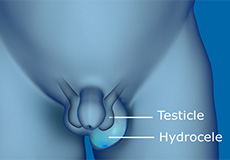
Hydrocele
The testes are formed in the abdomen and slowly descend into the scrotum through a narrow tube during foetal development in the womb. Non-closure of this tube causes fluids from the abdomen to drain into the scrotum. This leads to a hydrocele, the accumulation of fluid within the scrotum.

Hydronephrosis (Blocked Kidney)
Hydronephrosis is a condition in which one or both kidneys become swollen due to failure of the urine to drain from the kidney(s) to the bladder. This can occur due to either blockage or backflow of urine.
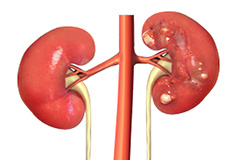
Kidney Cancer
Kidney cancer or renal cancer is a malignant disease of the kidney cells. Renal cell carcinoma affects the tubules of the kidneys and is the most common form of kidney cancer in adults. Sometimes, young children develop a form of kidney cancer called Wilms’ tumour.
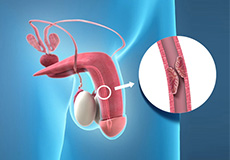
Urethral Cancer
Urine stored in the bladder passes outside the body through a tube called the urethra. It is a short tube that passes through the vagina in women, but is longer in men, running through the penis. Urethral cancer is a rare form of cancer that affects the cells and glands lining the urethra. It is more common in women over the age of 60.

Simple Kidney Cysts
Cysts are abnormal fluid or semi-solid filled sacs that may arise in any tissue of the body, including the kidneys. They may be associated with serious conditions where they present as multiple cysts affecting kidney function but are usually seen as simple single cysts that are non-cancerous. Simple cysts are more common in men and usually develop with age.

Kidney Stones
The kidneys are two bean-shaped organs that help in the removal of wastes from the body. As the kidneys filter blood of impurities, minerals and acid salts can accumulate and harden over time. These solid crystalline deposits are called kidney stones and can form in one or both kidneys.

Bladder Stones
A bladder stone is a hard, crystallised mineral in your urine that forms in your bladder as a result of the concentration of urine. This usually occurs when you are unable to completely empty your bladder and urine stagnates.
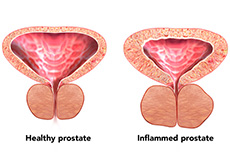
Neurogenic Bladder
The bladder is a sac that stores urine. Strong muscles surrounding the bladder opening keeps it closed until you experience an urge to urinate. The emptying of the bladder is controlled by nerves. When the bladder fills, nerves send a message to the brain, which in turn signals the bladder muscles to relax and store urine. Neurogenic bladder is characterised by poor bladder storage and emptying due to nerve damage, causing problems either in sending and receiving signals from the brain.
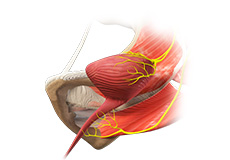
Overactive Bladder
The function of the bladder is to store urine that is produced by the kidneys. A normal bladder is highly compliant and able to store up to 500 ml of urine. Overactive bladder is a problem with bladder storage that causes a sudden urge to urinate due to an involuntary contraction of the bladder muscle. The urge may be difficult to control voluntarily, and overactive bladder may lead to the involuntary loss of urine (incontinence). Overactive bladder is also associated needing to urinate often during the day and at night.

Urinary Incontinence
Urinary incontinence is loss of normal control of the bladder and involuntary loss of urine. For many people with urinary incontinence it is an embarrassment. Urinary incontinence in some individuals may be a normal part of growth and disappears naturally over time.

Chronic Pelvic Pain
Chronic pelvic pain is constant pain felt in the lower abdominal region and the pain may persist for longer duration, for more than six months.

Haematospermia (blood in semen)
Coming soon

Testicular Pain
Coming soon

Bladder Pain
Coming soon

Urethral Pain
Coming soon

Urological Cancers
Coming soon

Bladder Outflow Obstruction
Coming soon

Phimosis
Coming soon

Urinary Catheter Care
Coming soon
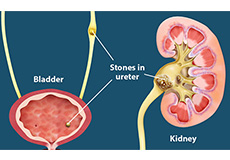
Urinary Stones
Coming soon

Pelvic Cancer
Coming soon

Robotic radical prostatectomy
Robotic radical prostatectomy is a minimally invasive approach to surgically remove the prostate gland. The prostate along with the seminal vesicles are removed in total. The urethral stump is then sutured to the neck of the bladder to restore continuity of the urinary tract.

Open radical prostatectomy
Open radical prostatectomy is a surgery performed to remove the prostate gland in order to treat prostate cancer. The procedure is used for cancers contained within the prostate (localized cancer).

Prostate biopsy
A prostate biopsy involves the removal of small samples of suspicious tissues from the prostate.

Fusion biopsy
MRI/US fusion technology allows the abnormalities on MRI images to be overlaid on live transrectal ultrasound images during prostate biopsy. This allows accurate targeting of MRI detected suspicious lesions rather than random biopsies of the entire prostate.

Bladder tumour surgery
Blood in the urine, painful and frequent urination, and low back pain are common urinary disorder symptoms and may be associated with bladder cancer. When you visit the clinic with these complaints, your doctor will order imaging tests to identify any growths or abnormalities in the bladder.

Laser surgery – stones and prostate
Kidney stones may develop due to crystallisation of certain components in urine. Some stones are small enough to pass out with the flow of urine, while large stones can lodge in some part of the urinary tract, blocking the passage of urine. This can lead to severe abdominal, lower back or groin pain, infection and kidney damage. Large kidney stones may be treated by breaking the stones into smaller fragments, so that they can easily pass out through the urine. This may be accomplished through minimally invasive surgery with the help of a laser.
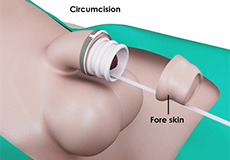
Circumcision
Circumcision is the surgical removal of some or the entire foreskin covering the head or glans (rounded tip) of the penis. The procedure is performed for cultural or religious reasons, or for health reasons. It is a safe surgical procedure performed using an aseptic (sterile) technique.

Hydrocele Surgery
A hydrocele is an accumulation of fluid around the testicles causing the scrotum to swell. This is caused due to non-closure of the tube through which the testicles descend into the scrotum. Non-closure of the tube leads to accumulation of fluid in the scrotum. Inflammation or injury of the testicles, or blockage within the spermatic cord by fluid or blood may also cause hydrocele.

Lithotripsy
Kidney stones are small, hard deposits that can develop in the kidneys. Lithotripsy, often referred to as extracorporeal shock wave lithotripsy (ESWL), is the most common procedure for the management of kidney stones (renal lithiasis). It uses shock waves to break up stones that form in the kidney, bladder or ureter, enabling easy passage of the fragments out of the body within the urine.

Stone Surgery
Stones are one of the most common and most painful disorders of the urinary tract. A stone is a hard crystalline mineral material that forms within the kidney or urinary tract.

Pelvic Exenteration
Pelvic exenteration is a surgical procedure that involves the removal of the bladder and/or part of the lower bowel along with internal reproductive organs to treat advanced or recurrent cancers.

Pelvic Reconstruction Surgery
Pelvic and perineal reconstruction procedures are performed to restore the normal structure and function of the urinary and genital organs (pelvic), and the surrounding area (perineal) that may be diseased due to infection, birth deformities, trauma or cancer.

Ureteroscopy
Ureteroscopy is a procedure that involves the use of a thin, long tube called a ureteroscope, to examine, diagnose and treat urinary tract problems. The ureteroscope is most commonly used for the diagnosis and treatment of kidney stones but is also indicated for the treatment of various conditions such as frequent urinary tract infections, urinary blockage, haematuria (blood in the urine), unusual cell growth or tumour in the ureters (urine tubes). Ureteroscopes may be flexible, or rigid and firm.
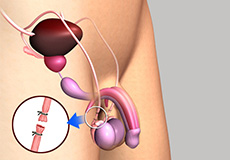
Vasectomy
Vasectomy is a minor surgical procedure in which the vas deferens, thin tubes that store and transport sperm, is cut and sealed so that the sperm can no longer enter the body through the vas. It is a permanent method of birth control in men and prevents the release of sperm when a man ejaculates.
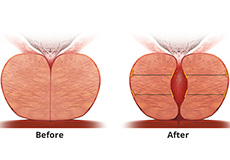

Orchidectomy
The testicles are male sex organs located in a sac of skin called the scrotum, which hang below the base of the penis. They produce testosterone (male hormones) and sperm. They are suspended by spermatic cords, which are supplied by a network of nerves and blood vessels and form the first section for the passage of sperm after ejaculation. A testicle that is severely injured or has a tumour is usually removed by a surgical procedure known as a radical orchiectomy, in which the entire testicle along with its spermatic cord is removed.

Orchidopexy
Orchidopexy is a surgery to lower the undescended testicle into the scrotum. Testicles develop in the abdomen and slowly move down into the scrotum (sac below the penis). Undescended testicle is a condition in which the testicles remain in the abdomen at birth and do not descend into the scrotum. Most often, the testicle(s) resume their normal position in the scrotum three to six months after birth, but those that do not descend require surgical treatment within 2 years of age.

Transrectal Prostate Scan
Ultrasound scans use sound waves that build a picture of the structures inside the body. To scan the prostate gland, a small probe is passed through the anal opening, which takes images of the prostate. This type of scan is used to measure the size and density of the gland. A sample of cells (biopsy) can be taken at the same time for examination under the microscope by a pathologist. The scan may be uncomfortable, but it only takes a few minutes.
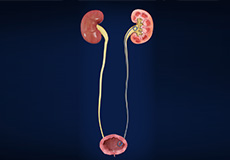
Ureteric Stenting
Ureteral stents are used to allow urine flow around a urinary obstruction and following stone removal surgery to facilitate healing and avoid the swelling of the ureter.

Bladder Stone Removal (cystolitholapaxy)
Transurethral cystolitholapaxy is a procedure performed to break down and remove bladder stones. The surgery is performed under local or general anaesthesia. During the procedure, you may be given antibiotics to prevent the risk of infection. Your doctor inserts a cystoscope (a small tube with a camera at the end) into the urethra and advances it into the bladder.

Laser Lithotripsy
Laser Lithotripsy is a procedure that uses Laser to break up stones in the kidney, bladder, or the ureter.

Cystolitholapaxy (for Bladder Stones)
Transurethral cystolitholapaxy is a procedure performed to break down and remove bladder stones.

Rigid Cystoscopy, Biopsy and Diathermy
Cystoscopy is a procedure performed to investigate the ureters, bladder and urethra (urinary system). A cystoscope, a flexible lighted tube, helps identify abnormal changes in the normal smooth pink lining of the bladder and urethra as well as identify tumours, bladder stones, and areas of narrowing, blockage or injury.

Bladder Botox Injection
Botox injection is used to treat urinary incontinence. Botox is a drug derived from a bacterium that paralyzes your muscles temporarily. When injected, it helps in relaxing the urinary bladder muscles.

Partial Cystectomy
Cystectomy is the surgical removal of the bladder, and a standard procedure to treat invasive bladder cancer. A partial cystectomy is a surgery performed to remove only a portion of the bladder, while the rest of the bladder functions normally. It is indicated when bladder cancer is superficial or has minimally invaded the muscle layer.

Bladder Augmentation (Ileal or Ileocaecal)
Augmentation is a procedure used to enlarge the bladder, lower the pressure created inside the bladder or enhance its ability to stretch in order to accommodate the complete volume of urine produced.

Simple Ureteric Reimplantation
Ureters are two narrow tubes that empty urine formed in the kidneys into the bladder, where it is temporarily stored before being released to the outside through the urethra. Injury or obstructions in the ureters can cause the backflow of urine into the kidneys (vesicoureteral reflux) and lead to urinary tract infections or kidney damage.

Varicocelectomy
Varicocelectomy is a surgical procedure indicated for the treatment of infertility in men. Varicoceles are abnormal enlargements of the veins in the scrotum. It is commonly found in adolescent boys in puberty, and occurs mostly around the left testicle, but can also occur on both sides.

Ureteric Injury Management
Coming soon

Penile Fracture Repair
Coming Soon

Epidydimal Cyst Excision
Coming soon

Frenuloplasty
Coming soon

Preputioplasty
Coming soon

Bladder Instillations
Coming soon

Suprapubic Catheter Placement
Coming soon

Prostate Multiparametric MRI
Coming soon

Catheter Changes
Coming soon

Urethrectomy
Coming soon

Radical cystectomy
Coming soon

Simple cystectomy
Coming soon

Bladder Neck Incision
Coming soon

Testicular Implants
Coming soon

Bladder Cancer Surveillance
Coming soon

Anterior exenteration
Coming soon

Testicular Prosthesis Insertion
Coming Soon

Testicular Biopsy
Coming Soon

Cremasteric Myotomy (For Retractile Testes)
Coming Soon

Excision of Spermatocele (Post Vasectomy)
Coming Soon

Upper Tract Endourology
Coming Soon

Excision of Epididymal cyst
Coming Soon

Bladder Hydro-distention
Coming Soon

Scrotal and Genital Surgery
Coming Soon

Open Radical Cystoprostatectomy & Urethrectomy
Coming Soon

Anterior Exenteration or Radical Cystectomy
Coming Soon

Total Exenteration
Coming Soon

Boari-Flap/Psoas Hitch Ureteric Reimplantation
Coming Soon

Ileal Conduit Formation
Coming Soon

Bladder Diverticulectomy
Coming Soon

Lower Tract Endourology
Coming Soon

